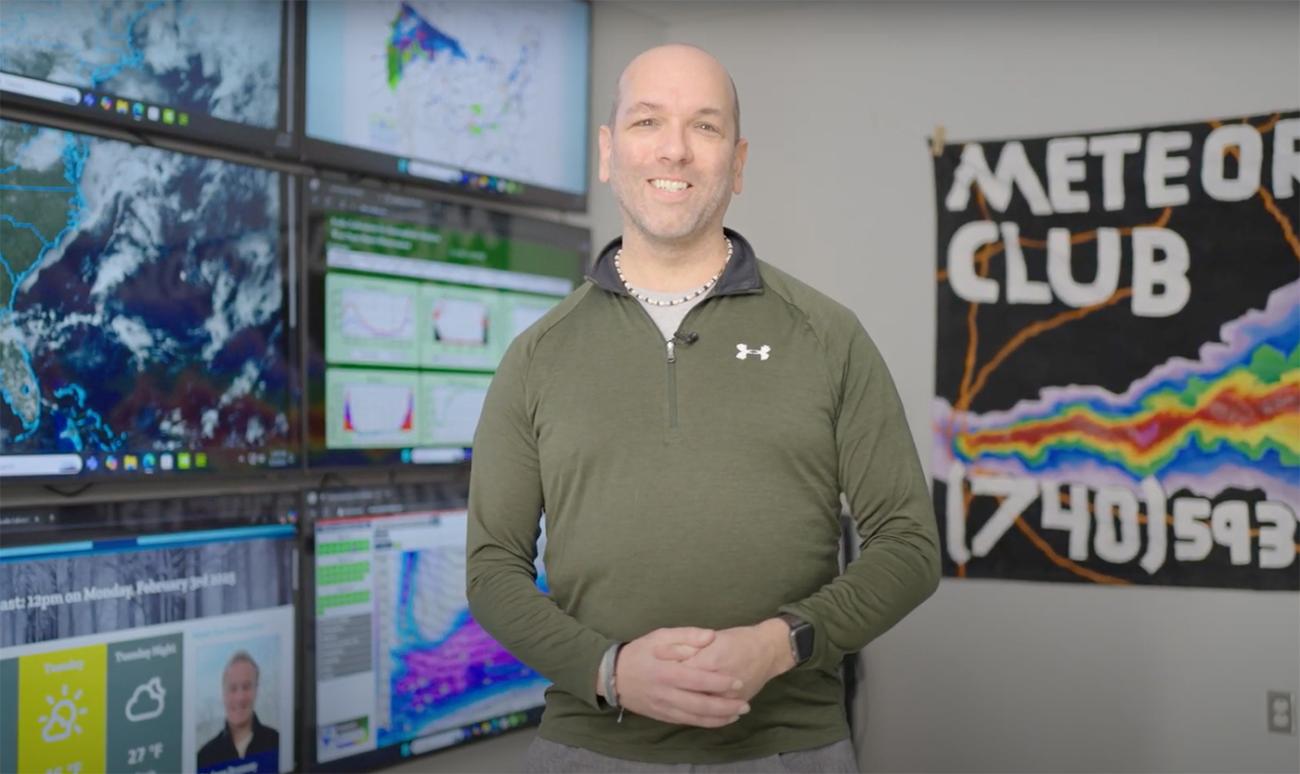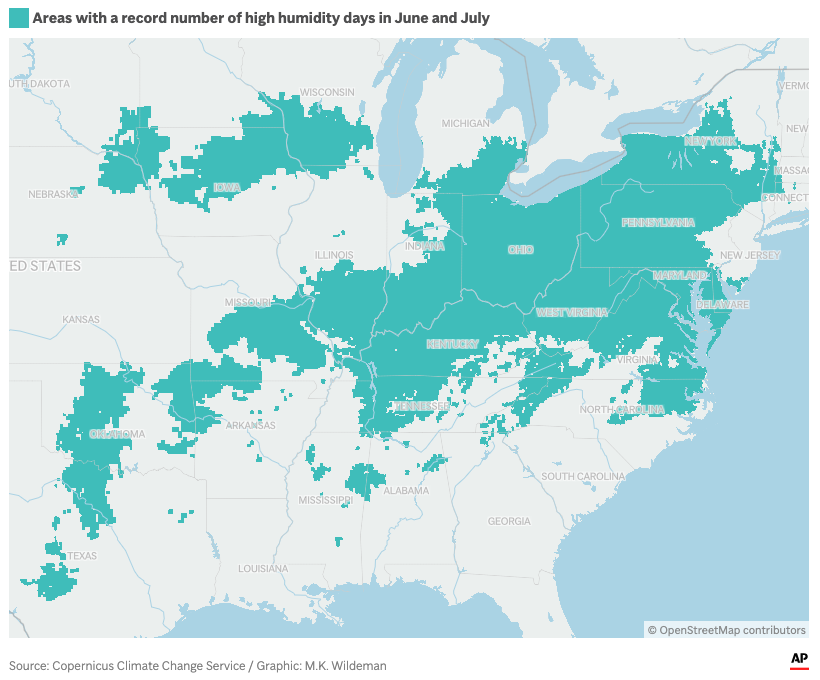
We’ve all heard the saying "it’s not the heat, it’s the humidity,” but in the first half of summer 2025 both were a factor in creating extreme weather. Excessively high temperatures and record-breaking humidity combined to create uncomfortable, and at times even dangerous, conditions for nearly half of the U.S. population.
The worst of the humid conditions impacted the U.S. east of the Rocky Mountains, with nearly all of Ohio’s population included in experiencing a record number of high humidity days in June and July. While some of these muggy conditions can be attributed to large-scale weather patterns, experts agree that there is likely also a strong connection with climate change.
Why the U.S. is experiencing excessive humidity
Ohio University Professor of Meteorology Ryan Fogt, Ph.D., is a climatologist with expertise in climate change, weather events and the variability and dynamics of large-scale climate in the Southern Hemisphere. He also serves as Director of OHIO’s Scalia Laboratory for Atmospheric Analysis. Fogt says that short term changes in conditions like humidity are typically associated with weather patterns.
“In the short term—weeks to months—[high humidity] is tied to weather patterns, and whether or not the air above us is sourced from a large, warm body of water,” said Fogt. “If we continue to be in a pattern where the air above us is sourced from an ocean—particularly a warm ocean like the western Atlantic Ocean or the Gulf of Mexico—the dew point temperature can remain high.”

If a persistent weather pattern sets up and continues to supply air from these regions to the eastern U.S., the humidity will continue to be much higher. This was the case this summer for most of the U.S. east of the Mississippi River. Due to a persistent large-scale atmospheric pattern, there were not many days of below average temperatures in June and July.
When patterns emerge over a longer period of time, Fogt says there is a stronger chance that extreme conditions, like the excessive humidity of this summer, are indicative of climate change.
“In the long term—years to decades—the increase [in humidity] likely would have a background climate change signal,” he said. “There is a possible long-term climate change here. As the air warms from greenhouse gas increases, it theoretically can also hold more moisture, giving rise to higher dew points if the air is sourced from a large moisture source [like the ocean].”
Higher dew points are certainly something that many parts of the eastern U.S. have experienced this summer. Dew point is the temperature at which air reaches saturation (the most water vapor it can hold), and when dew will start to form on surfaces, according to Fogt. Unusually high dew points are indicative of extreme humidity. In June and July, the average dew point was more than 6°F higher than normal in many major cities. Columbus, for example, had an average dew point that was 6.2°F higher than normal.

How heat and humidity interact
What made the weather of early summer 2025 especially brutal was the combination of the oppressive heat and record humidity. A widespread late-June heatwave impacted much of the central and eastern U.S., including Ohio, and brought record-setting temperatures. More than 100 million people across 726 counties experienced record heat during that time according to National Centers for Environmental Information. That’s on top of the record humidity.
Fogt says record heat and humidity occurring at the same time is no coincidence—heat and humidity tend to be related to each other in the eastern U.S.
“Warmer air can hold significantly (and exponentially) more moisture than cold air,” he explained. “There can be a lot more moisture present in warmer air masses than colder ones.”

The combination of warm air and more moisture can also lead to lingering heat and humidity at night. High humidity impacts how much air is able to cool at night. Higher nighttime temperatures can then have an especially negative impact on the body, preventing recovery from the peak high temperatures of the afternoon.
“Lingering humidity overnight is really related to how much moisture is present during the day, and where all the moisture in the air is sourced,” said Fogt. “Generally, areas east of the Rocky Mountains can receive a lot of moisture from the Gulf of Mexico. If this air remains in place overnight and is not replaced with drier air from Canada or other sources, the nighttime temperature will likely not cool as much.”
As air cools overnight it typically approaches dew point temperature. When this happens, the air becomes saturated, dew forms and the temperature will start to drop much slower after this. It drops slower because as dew forms, water vapor changes from a gaseous to liquid state (condensation), which releases latent heat to the surrounding air, warming it. If the dew point is higher than average, like it was this summer, the temperature remains high and is slow to drop.
Long-term impact and climate change
The eastern U.S. was hit especially hard with heat and humidity earlier this summer, but average dew points east of the Rocky Mountains have increased sharply in the past few decades, according to data from the Copernicus Climate Change Service.
Humidity in general tends to be much higher in the eastern U.S. because it often has its air supplied from the Gulf of Mexico or Atlantic Ocean over the Gulf Stream Current—two relatively warm bodies of water. Fogt says this pattern of humid air sourced from the Gulf can change quickly, so it is hard to know if it will persist for years to come, especially when conditions in the ocean—which changes much more slowly—aren’t very predictable.

However, Fogt says when looking at the bigger picture, the steady increase of average dew points east of the Rocky Mountains over the decades could indicate a connection with climate change.
“There are many multi-decadal oscillations in the ocean system which can have an impact of changes from one decade to the next, but generally, if something is changing on a pattern of 30 years or longer, and this change is consistent with what climate models tell us would happen because of greenhouse gas increases, there’s a strong chance it has a connection with climate change.”




